Want to guarantee beautiful peonies blooms this year? The trick is to choose the right fertilizer
Gardening experts explain what to choose and when to apply fertilizer for peonies with beauty, strength and longevity
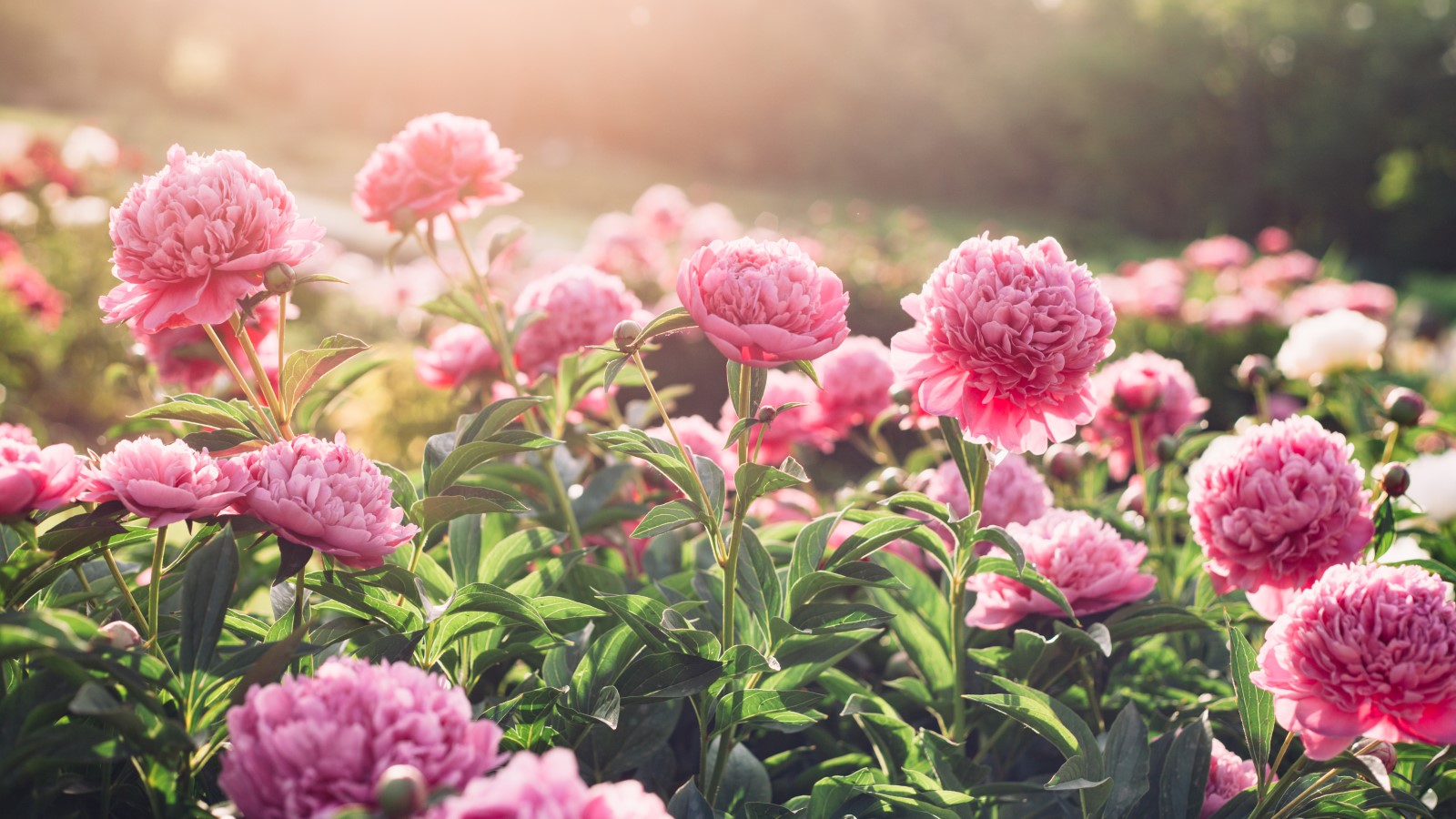

As show-stoppers of the flower bed, peonies are often the first big blooms to arrive in late spring. With their big marsh-mallow hued flowerheads, they are a welcome sight. If you want to give yours a helping hand, we've canvassed experts on the best fertilizer for peonies.
Knowing when to fertilize peonies and what with, will encourage stronger plants, more flowers and longevity. Of course, as with many plants, it's good to consider whether they actually need fertilizer first.
We've asked professional plantspeople how to check, what to feed them with, how much and how often, so you can grow peonies to be proud of – and for yourself and others to enjoy.
How to choose the best fertilizer for your peonies
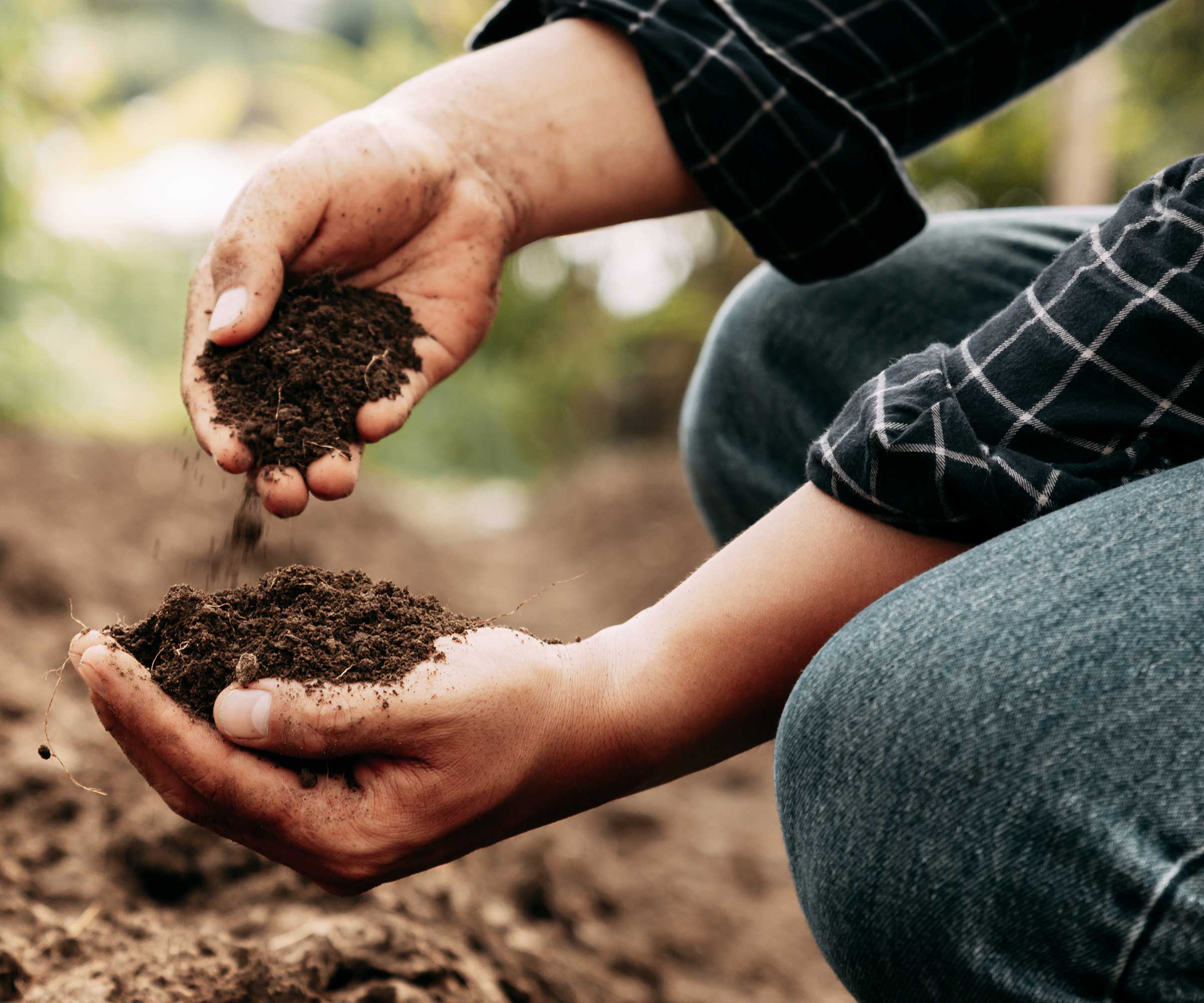
Before applying fertilizer to any plants in your flower beds, it's a good idea to check, if and what, they actually need, by considering your soil health. Too much, or the wrong type of fertilizer, can be just as damaging to your plants as not enough.
The run off from phosphorous and nitrogen-based fertilizers can also harm wildlife in waterways, causing algal bloom, and maybe restricted in your region.
'Peonies thrive in fertile, well-draining soil with plenty of organic matter,' says Tabar Gifford, master gardener and representative, American Meadows. 'Before fertilizing, it's a good idea to test your soil to determine its nutrient composition.
'When you fertilize peonies properly, you can expect stronger, more vibrant plants that thrive throughout the growing season. Well-fed peonies produce larger, more abundant blooms with richer fragrance, making them a stunning focal point in any garden.'

Tabar Gifford is a Master Gardener, and dedicated “plant geek”. With a lifelong love for gardening and nature, and a background in environmental studies and sustainable community development, she combines horticultural expertise with a commitment to education. Striving to empower individuals in achieving their gardening aspirations, Tabar embodies a genuine passion for sharing her knowledge. She gardens in zone 4 in Vermont.
1. Check whether your peonies require fertilizer
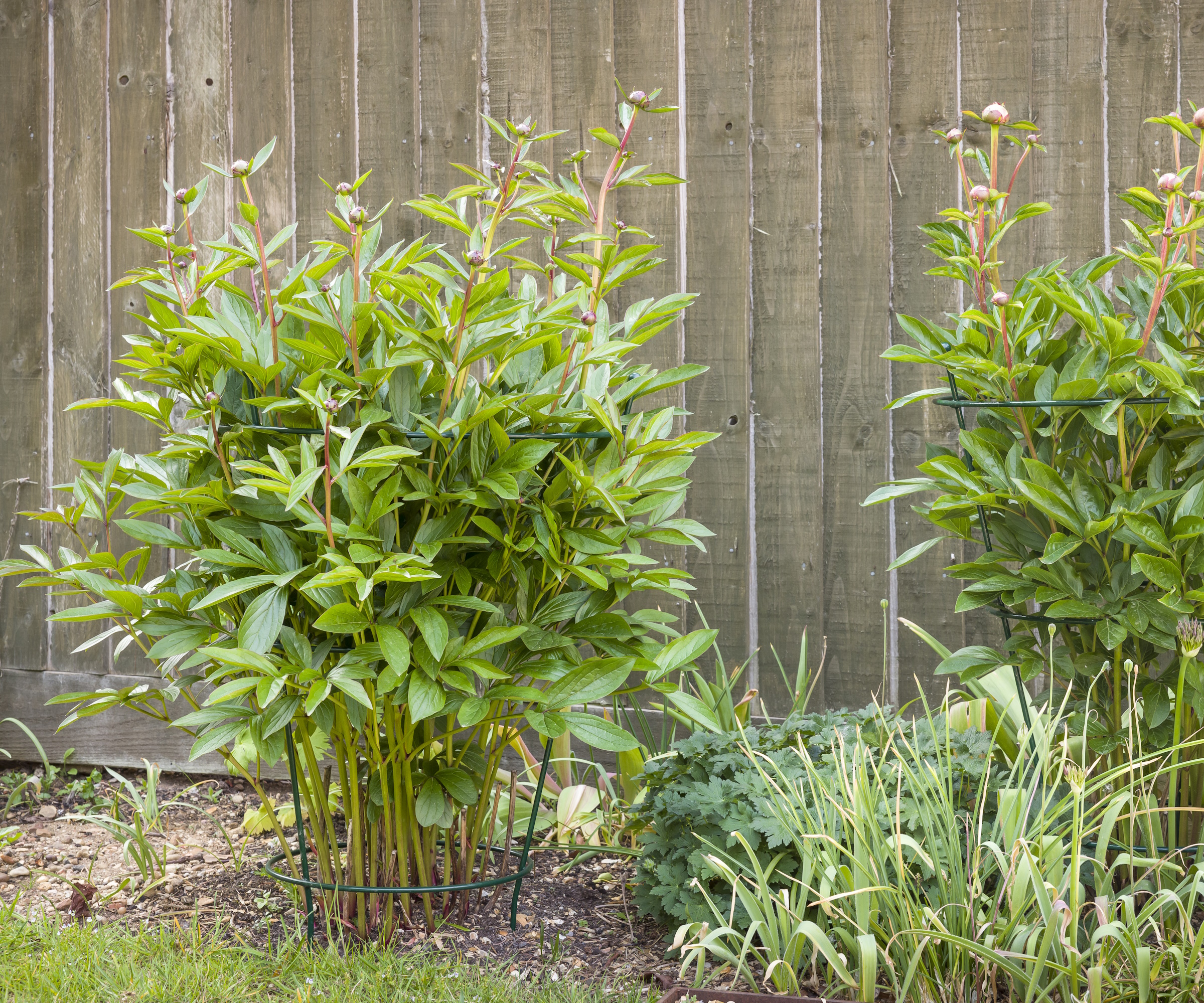
A soil test is one way to check the nutrient content and pH balance of your soil. However, there are other time-honoured ways to tell what is going on with your plants. Peonies are relatively low-maintenance, but the signs that they may need extra nutrients (or have had an overdose) include the following:
Weak or stunted growth 'If your peonies fail to produce their typical strong, bushy foliage, they may be lacking key nutrients,' explains Tabar.
Reduced flowering 'If blooms are smaller, fewer, or fail to appear at all, a nutrient imbalance could be the cause,' she continues.
Pale or yellowing leaves 'This may indicate a nitrogen or iron deficiency, or excess phosphorous, especially if the plant was previously healthy,' explains Tabar.
Excessive leafy foliage 'Evaluating the performance of the previous season's growth is useful and if the plant did not perform optimally, applying fertilizer could enhance its growth,' says Kady Adelman, Manager Adelman Peony Gardens.
'Conversely, if the plant exhibited abundant leafy foliage, it might have been over-fertilized. In this case, consider reducing the application of fertilizer for one or two seasons.'

Based in Salem, Oregon, Kady Adelman is the manager of Adelman Peony Gardens, a family-owned Peony garden, established in 1995. Alongside multiple generations of her family, Kady helps to oversee the production of over 500 named peony varieties.
2. Select the best fertilizer for your peonies
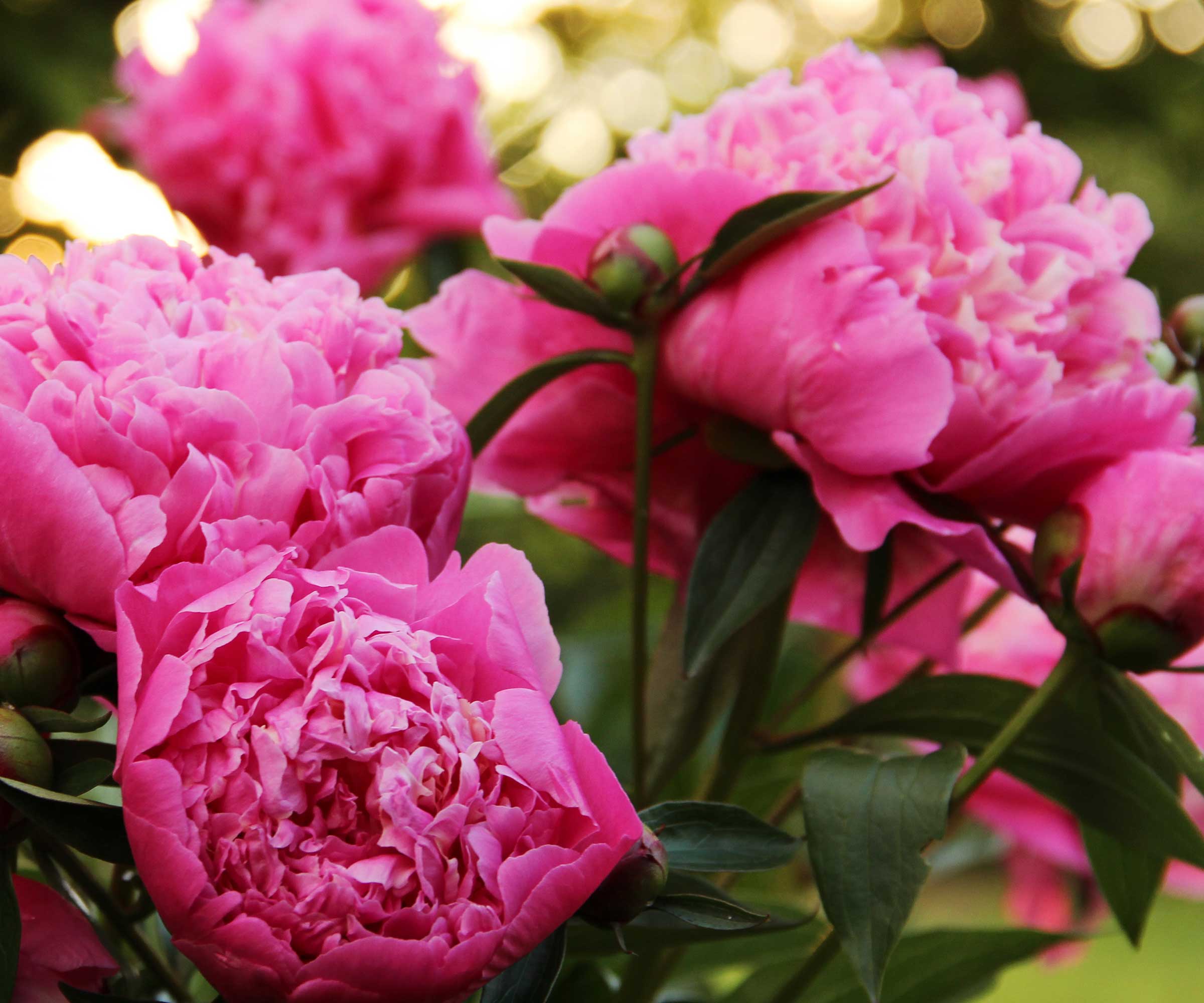
It's easy enough to make plant fertilizer, but if you don't have time, there is no shortage of choice, when it comes to commercial products. For bountiful blooms, it pays to be discerning. If you've done a soil test, you will know if there is a deficit of specific nutrients in your soil. If you haven't and your peonies are showing any of the aforementioned signs, we've outlined some good options.
'When choosing a fertilizer, opt for a balanced, slow-release formula that supports steady growth without overfeeding,' says Tabar. 'With proper care - including the right fertilization - peonies can thrive for decades, producing increasingly abundant flowers each year.
Compost: 'Peonies benefit greatly from natural sources of nitrogen, phosphorus, and potassium found in compost or aged manure,' says Tabar. 'Mixing compost into the topsoil each spring enhances soil fertility while improving drainage and moisture retention.
This Ms Tumbles Compost Tumbler from Burpee is ideal for small-space composting and even has a drain for removing "compost tea", which can also be fed to peonies.
'Organic matter enhances soil structure, promoting better drainage and airflow around the roots, which helps prevent the moisture buildup that encourages fungal growth,' continues Tabar. 'By incorporating compost or organic fertilizers into the garden, peony growers can boost plant immunity naturally, reducing the need for chemical treatments while ensuring vigorous growth and abundant blooms.'
Organic flower fertilizer: 'A granular or slow-release fertilizer with a slightly higher phosphorus and potassium ratio (such as 5-10-10) encourages flower production and disease resistance,' explains Tabar. 'Apply it sparingly in early spring and again after flowering.'
Bulb food: 'A commercially available bulb food may be the most convenient option and provides a comprehensive range of necessary nutrients,' says Kady. 'It is not recommended to use general purpose or vegetable fertilizers for bulbs, as these can contain excessive levels of nitrogen, which promote lush, green foliage rather than healthy bulb development.'
If you don't have time to make your own compost, Kady recommends Dr Earth bulb food from Amazon for peonies.
Bone meal (slow-release phosphorus boost): 'Bone meal is beneficial for peonies, but it does not supply a complete nutritional profile,' says Kady. 'It supports plant growth, but it is advisable to use it in conjunction with other nutrient supplements.'
'Bone meal can be beneficial when planting new peonies or revitalizing older plants,' adds Tabar. 'It is an excellent source of phosphorus, which supports strong root development and abundant blooms.
'Other additional fertilizers for peonies include fish emulsion (high in nitrogen, promotes early-season growth); kelp meal (provides micronutrients and encourages root health) and wood ash (a good potassium source for flowering, if soil pH allows),' says Tabar.
If you are planting new peonies, or want to encourage older plants, try this Espoma bone meal from Garden Goods Direct, if it's permissible in your region.
Do check the local by-laws where you live, as some states have banned, or restricted the use of phosphorous-based fertilizers to particular times of the year, due to water pollution.
3. Time it right

The best time to fertilize peonies is in early spring, as the new shoots emerge. This is typically around March or April, depending on your growing zone. They usually require a second application, later in the year, after they have bloomed.
'The timing may vary based on your region,' says Kady. 'In early spring, aim to fertilize when red shoots begin emerging from the soil and again in autumn during winter bed preparation.'
'Fertilizing in spring ensures that the plants have access to the nutrients they need to support strong root development and flower production,' explains Tabar. 'A second, lighter application can be applied after blooming in early summer to encourage continued vigor.
'This applies to peonies grown in USDA hardiness zones 3–8, where they are most commonly cultivated. Although, peonies in warmer climates (zones 7–8) may require slightly different care, including more organic matter and careful mulching to help regulate soil temperatures.
'Generally, for cold climates (zones 3-5), fertilize in April-May when the soil has thawed. In milder regions, apply it in March-April as soon as new shoots appear. In warmer areas (zone 8) peonies may emerge earlier, so fertilization might be needed in February-March.'
Soil health is dependent on a rich and diverse microbiome. Achieve this and your plants will be healthy, strong and better able to withstand pests or disease. An over-reliance on synthetic fertilizers can lead to poor growing conditions. To improve garden soil, choose organic or natural soil amendments and fertilizers, where possible.
'When applying fertilizer, spread it around the root zone rather than directly on the crown to prevent damage and ensure nutrients reach where they’re needed most,' advises Tabar.
'Additionally, keep mulch light and airy, as peonies prefer well-drained soil and can struggle if buried too deeply. With proper care, these cherished perennials will continue to bring timeless elegance and vibrant color to the garden for generations to come.'
Sign up to the Homes & Gardens newsletter
Design expertise in your inbox – from inspiring decorating ideas and beautiful celebrity homes to practical gardening advice and shopping round-ups.
Jacky Parker is a freelance lifestyle journalist and writer, producing a wide range of features for magazines and websites. She has written for Homes & Gardens and its sister titles, Livingetc and Country Homes & Interiors for more than 15 years, both as a freelance contributor and staff member, regularly reporting on the latest interiors, gardens and lifestyle inspiration, speaking to experts in their respective fields and discovering the newest tips.
You must confirm your public display name before commenting
Please logout and then login again, you will then be prompted to enter your display name.
-
 Nate Berkus says slipcovered sofas are back on trend – and I just found a way to create this designer-approved laid-back look from just $86
Nate Berkus says slipcovered sofas are back on trend – and I just found a way to create this designer-approved laid-back look from just $86This classic style is making a strong comeback, but did you know you don't have to buy a whole new couch to get this Nate-approved look?
By Eleanor Richardson
-
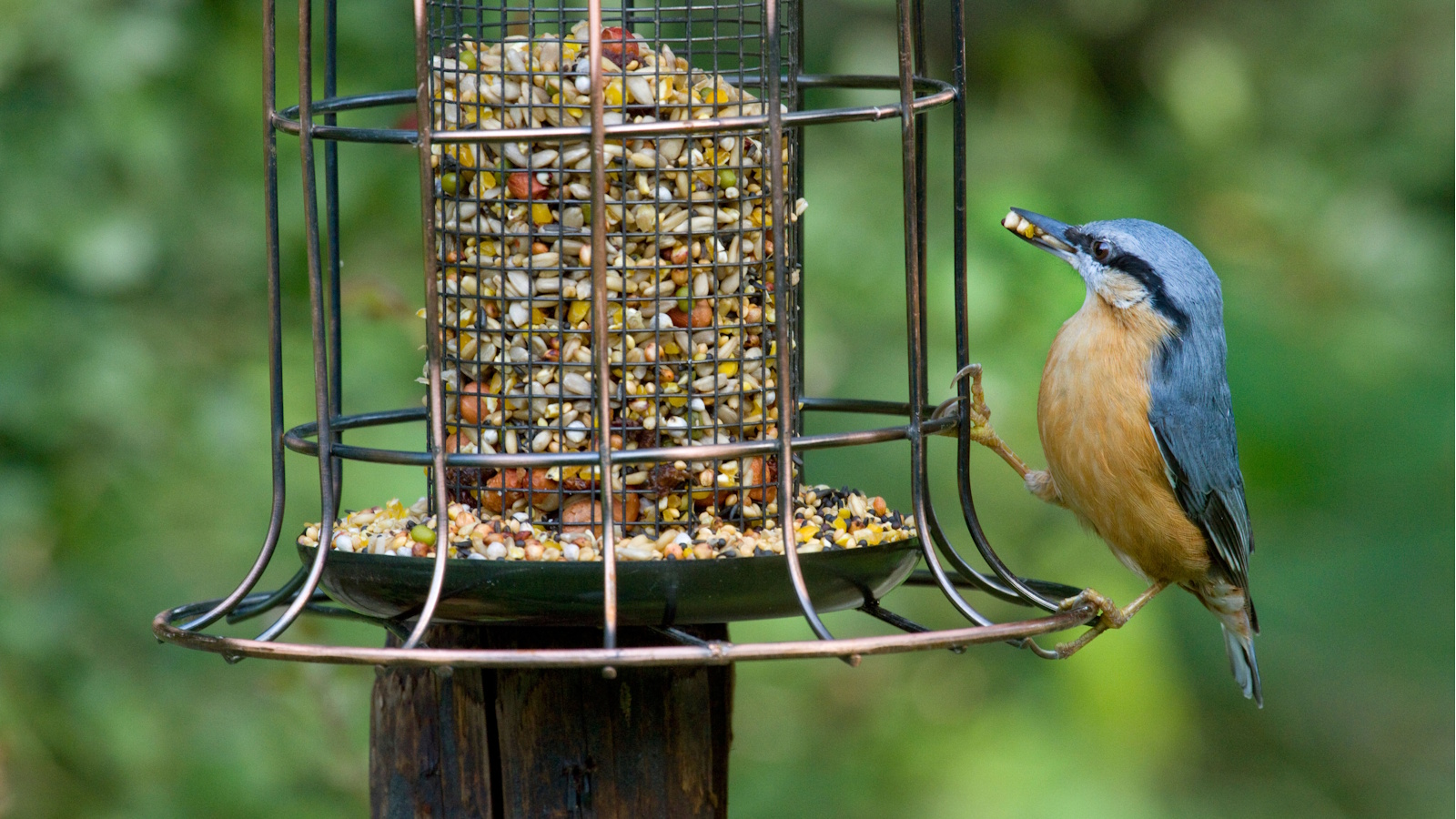 Gardeners are putting pasta in bird feeders this spring – but there is one important warning you need to know before following suit
Gardeners are putting pasta in bird feeders this spring – but there is one important warning you need to know before following suitCooked pasta can be a nutritious snack for birds, but serving it in the wrong way could cause them harm
By Tenielle Jordison